Data collecting
This comparative study received ethical approval from the Institutional Review Board of Zhujiang Hospital, Southern Medical University (Protocol No: 2023-KY-164-01), with written informed consent obtained from all participants….

This comparative study received ethical approval from the Institutional Review Board of Zhujiang Hospital, Southern Medical University (Protocol No: 2023-KY-164-01), with written informed consent obtained from all participants….
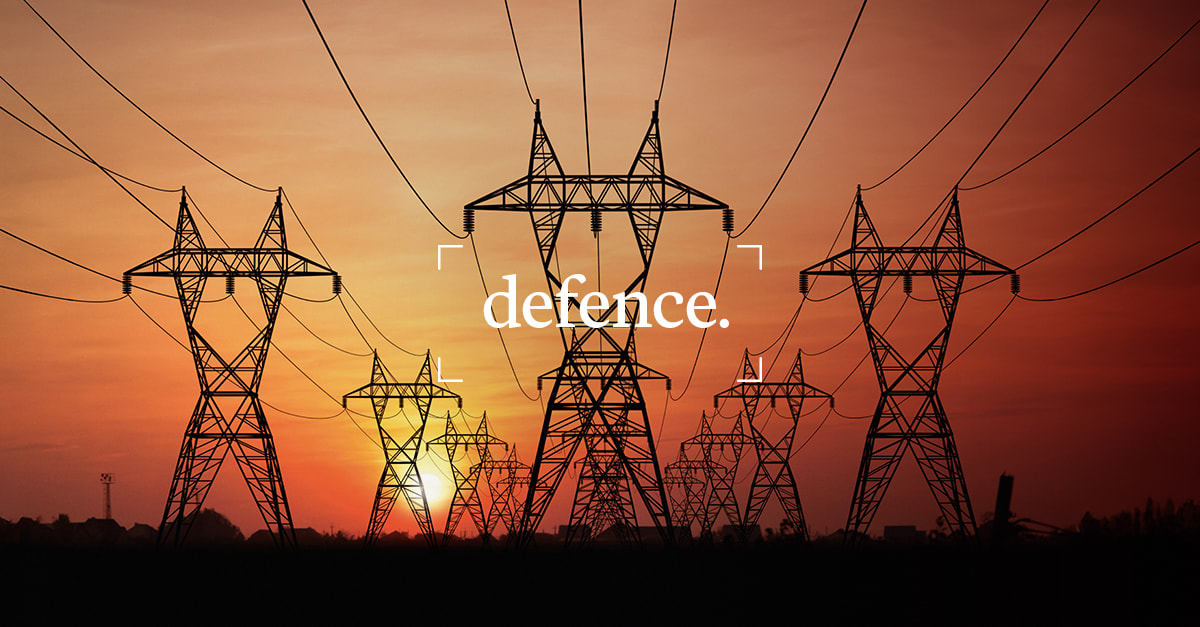
For more than two centuries, energy has been the beating heart of economic growth.
Until recently, most of this energy has come from one simple mechanism – burning things. And as we’ve switched from wood to harder-to-access (but more energy-intense) coal, oil and gas, so our economy has come to rely on a sprawling network of pipelines and trade routes.
This has created some unexpected relationships. In 1997, for instance, just six years after the end of the Cold War, the Nord Stream 1 pipeline was completed, connecting Germany and Russia via the Baltic Sea. At the height of its operation in 2021, Germany was getting 55% of its natural gas from Russia, along with the majority of its coal and oil. At the same time, the wider EU bloc was also buying most of its oil and gas from Russia.1
Today, as deglobalisation continues and the geopolitical landscape shifts, many of these relationships are fraying. Germany and the EU have slashed their energy imports from Russia, aiming to end them entirely by 20272; meanwhile India has come under pressure from US President Donald Trump to do the same3.
The question for investors is, what will replace these routes? Are buyers simply finding alternative sellers, or is a deeper shift taking place?
At Lombard Odier, we believe the world’s energy system is undergoing a profound change. Driven by a desire to achieve domestic security, many governments are seeking not just to re-route their energy purchases, but to build their own home-grown supply. From China to Europe and India to the US, energy independence is increasingly being seen as the best form of defence against a fracturing and unstable geopolitical order.
Across Europe, renewables are becoming the first line of defence for a bloc determined to bolster its energy resilience
45 kilometres off the coast of Ostend, Belgium, a world-first construction is underway. Standing as a fortress against the wind and waves of the North Sea, the artificial Princess Elisabeth Energy Island – due for completion in 2026 – will act as a hub taking electricity generated by offshore windfarms and distributing it to the European mainland. The island will also act as an interconnector for neighbouring countries, enabling Belgium to trade renewable energy.
In time, it is expected that Princess Elisabeth will be one of multiple energy islands that could eventually connect dozens or even hundreds of North Sea windfarms, which could collectively meet up to 20% of the EU’s entire annual electricity demand by 20504.
Across Europe, renewables are becoming the first line of defence for a bloc determined to bolster its energy resilience. With huge solar resources in the south (in recent years, Portugal has seen days where its entire electricity demand has been met renewably5) and vast wind potential in the north, the EU already obtains around 45% of its electricity from renewable sources6, and is aiming to achieve the same figure for all forms of energy (by replacing many instances where fossil fuels are currently the end-use form) by 20307.
Other major economies are taking a similar approach. Over the next five years, India is expected to invest more than USD 340 billion to install enough renewable capacity to meet the electricity needs of every household roughly twice over, making up approximately half of the country’s total electricity generation.8 And in the US, despite President Trump’s pro-oil ‘drill, baby, drill’ rhetoric, further strong renewables growth is expected in 2025, with wind, solar, geothermal and hydropower now making up around 90% of the country’s new electricity capacity added each year.9
No one is able to match China as the country continues its push to become the world’s first ‘electro-state’ and achieve its stated aim of energy independence
No one is able to match China, however. Already home to more than 40% of combined global renewables capacity10, China invested a further USD 625 billion in clean energy projects in 2024 alone11, as the country continues its push to become the world’s first ‘electro-state’ and achieve its stated aim of energy independence.
For many in the West, China’s clean energy dominance has created a new dependency problem. Wind turbines, solar panels, batteries and the millions of kilometres of new cabling needed to transition to zero-carbon electricity are reliant on ‘energy metals’ and other critical minerals, such as aluminium, cobalt, lithium, graphite and rare earth elements.
Today, China is the leading processor of 19 of the 20 most important critical minerals – with an average global refining share of 70%12 – giving President Xi and the Chinese Communist Party a powerful geopolitical weapon. As governments shift away from coal, oil and gas, the risk is that they are merely swapping one dependency for another.
In response, according to the International Energy Agency’s (IEA) policy tracker, 200 national policy interventions – half ratified in just the last few years – aim to boost domestic critical minerals supply chains13.
These include US President Donald Trump’s creation of a ‘National Energy Dominance Council’, which will treat critical minerals supply as a national security imperative14; the respective Canadian and Australian Critical Minerals Strategies; and the EU’s Critical Raw Materials Act, which aims to boost supply chain security by ensuring that, by 2030, a minimum of 10% of the critical minerals it needs are mined domestically, at least 40% are processed in the EU, and at least 25% are sourced from recycling.15
Across the board, metals recycling is set for rapid growth… the size of the market for recycled minerals could rise five-fold to reach USD 200 billion by 2050
This global push is accelerating the permitting process for new mines – it is also fostering new innovations aimed at minimising reliance on overseas supply.
For example, New Zealand start-up Mint Innovation’s bio-based recycling process uses bacteria to extract target metals from electronic waste and requires just a fraction of the energy needed by traditional recycling methods – a recent partnership with Jaguar Land Rover to recover lithium, nickel and cobalt from used electric vehicle (EV) batteries has received funding from the UK government16. In Europe, Germany’s BRAIN Biotech and the EU’s Horizon-funded BioRecover project17 are working on bringing similar solutions to scale.
Across the board, metals recycling is set for rapid growth. As demand for critical minerals rises, the International Energy Agency forecasts that the size of the market for recycled minerals could rise five-fold to reach USD 200 billion by 2050, cutting the need for new mining activity for some minerals by as much as 40%.18
Read also: The rise of metals recycling in the energy transition
Efforts are also being made to sidestep critical minerals altogether, especially in the manufacture of batteries, which have become essential for the grid-scale storage needed to support renewables projects and EV uptake.
Today’s batteries are made using lithium and other single-source-dominated minerals. In April 2024, however, US-based Natron Energy, which has received significant support from federal funds, cut the ribbon on the US’s first-ever commercial-scale sodium-ion battery factory, which employs an entirely domestic supply chain and avoids the need for any hard-to-obtain critical minerals. (Natron’s growth is so rapid that the firm has already announced the site for a new USD 1.4 billion ‘giga-factory’, which will increase its manufacturing capacity 40-fold.)19
Swedish firm Altris is also developing sodium-ion batteries, with investment support from major names including Maersk Growth and Volvo.20 Like Natron, Altris’s batteries can be made from an exclusively domestic supply chain, and are largely reliant on abundant materials such as iron, salt, and even wood21. BloombergNEF forecasts that sodium-ion batteries will represent 15% of the energy storage market by 2035, up from 1% today.22
As the world’s biggest powers invest in national energy resilience, they are building new export markets that will come to replace today’s fossil fuel networks
As global tensions mount, and multipolar dynamics deepen, it’s easy for investors to imagine a world in which nations are ‘hunkering down’ and investment opportunities diminishing.
At Lombard Odier, we believe this is to miss the bigger picture. We understand that the changing world order simply means a reshaping of where opportunities are to be found, and that as governments take measures to secure strategic industries we will see a tidal wave of new investment from both the public and private sectors.
As the world’s biggest powers invest in national energy resilience, they are building new export markets that will replace today’s fossil fuel networks. Incumbent oil exporters will see revenues fall, while winners will emerge from those offering the solutions that help nations bolster their renewable supply.
The opportunities will be many and varied – new battery technologies, metals recycling, the export of renewably-generated electricity, and high-voltage-direct-current electricity cabling (of which European companies are the world’s leading manufacturers). Domestic energy security will create global potential.
When Belgium’s Princess Elisabeth energy island is complete, standing lonely but unbowed amid the storms of the North Sea, it will be a powerful symbol of renewables’ new role on the frontline as nations invest to build energy security.
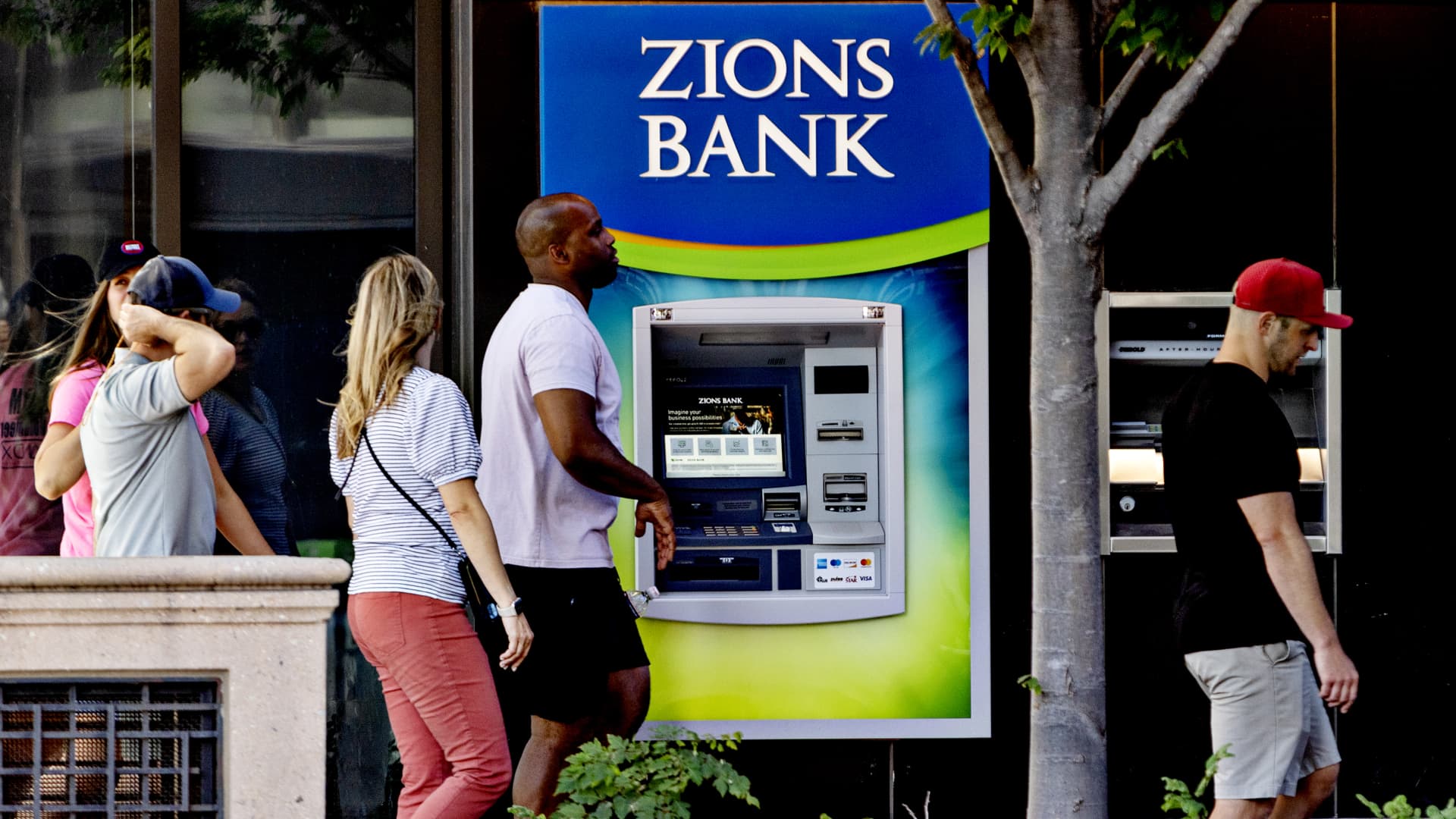
An automatic teller machine at the Zions Bank headquarters in Salt Lake City, Utah, on July 10, 2023.
Kim Raff | Bloomberg | Getty Images
This is CNBC’s Morning Squawk newsletter. Subscribe here to receive future editions in your inbox.
Here are five key things investors need to know to start the trading day:
Stocks dropped yesterday amid mounting fears on Wall Street about the prevalence of bad loans, and what it means for a slew of regional banks. That’s led to some “cockroach” hunting, as investors race to assess the health of financial institutions’ lending businesses.
Let’s break this down:
John Bolton, former national security advisor, speaks during a Senate briefing hosted by the Organization of Iranian American Communities to discuss U.S. policy on Iran, in Washington, D.C., March 16, 2023.
Tom Williams | Cq-roll Call, Inc. | Getty Images
John Bolton, a former national security advisor to President Donald Trump, was indicted yesterday by a federal grand jury on charges of mishandling classified information. Bolton is the third Trump adversary to face criminal charges in recent weeks, following the indictments of former FBI Director James Comey and New York Attorney General Letitia James.
Meanwhile in Washington, a bill to fund the military during the government shutdown failed in the Senate yesterday. The vote came hours after senators voted down funding legislation for the 10th time. United Airlines CEO Scott Kirby told CNBC yesterday that bookings could start slowing if the government doesn’t reopen soon.
In an aerial view, a container ship arrives at the Port of Oakland on Oct. 10, 2025 in Oakland, California.
Justin Sullivan | Getty Images
You’re likely already feeling the economic impact of Trump’s tariff policy, according to S&P Global.
The firm’s analysis found the levies will run global businesses nearly $1.2 trillion (yes, trillion) this year. Even under conservative estimates, S&P said two-thirds of that cost is expected to be passed down to consumers.
While we’re on the subject of tariffs’ economic impact: The U.S. budget deficit in 2025 shrunk by slightly more than 2%, compared with the 2024 fiscal year. As CNBC’s Jeff Cox notes, revenue from Trump’s tariffs helped mitigate some government spending. Still, the federal government’s shortfall sits at $1.78 trillion.
SINGAPORE, SINGAPORE – OCTOBER 05: George Russell of Great Britain driving the (63) Mercedes AMG Petronas F1 Team W16 leads Max Verstappen of the Netherlands driving the (1) Oracle Red Bull Racing RB21 Lando Norris of Great Britain driving the (4) McLaren MCL39 Mercedes Oscar Piastri of Australia driving the (81) McLaren MCL39 Mercedes and the rest of the field at the start prior to the F1 Grand Prix of Singapore at Marina Bay Street Circuit on October 05, 2025 in Singapore, Singapore.
Mark Thompson | Getty Images Sport | Getty Images
Apple will soon announce a deal valued at $140 million annually for F1’s U.S. media rights, sources told CNBC’s Alex Sherman. The partnership will help the technology giant build out its sports streaming portfolio, which already includes Major League Soccer and MLB content.
In an interview this week, Eddy Cue, Apple’s senior vice president of services, said Apple has “love” for F1. Cue also said the modern sports watching experience has “gone backwards” as so many different streaming services get in the game.
Meta Ray-Ban Gen 2 AI glasses during the Meta Connect event in Menlo Park, California, US, on Wednesday, Sept. 17, 2025.
David Paul Morris | Bloomberg | Getty Images
The parent company of sunglasses maker Ray-Ban has a specific company to thank for its recent performance: Meta.
EssilorLuxottica said a sizable amount of its revenue growth in the third quarter was tied to its partnership with the big tech company to develop and sell smart glasses. Stefano Grassi, EssilorLuxottica’s finance chief, called the Meta products a “lift” for the business.
Speaking of Meta, Oracle‘s shares were able to buck yesterday’s market downturn after the company confirmed a cloud deal with the Facebook parent.
Here are some stories we’d recommend making time for over the weekend:
— CNBC’s Hugh Son, Sarah Min, Spencer Kimball, Jordan Novet, Jonathan Vanian, Ari Levy, Alex Sherman, Jeff Cox, Leslie Josephs, Dan Mangan and Lillian Rizzo contributed to this report. Josephine Rozzelle edited this edition.
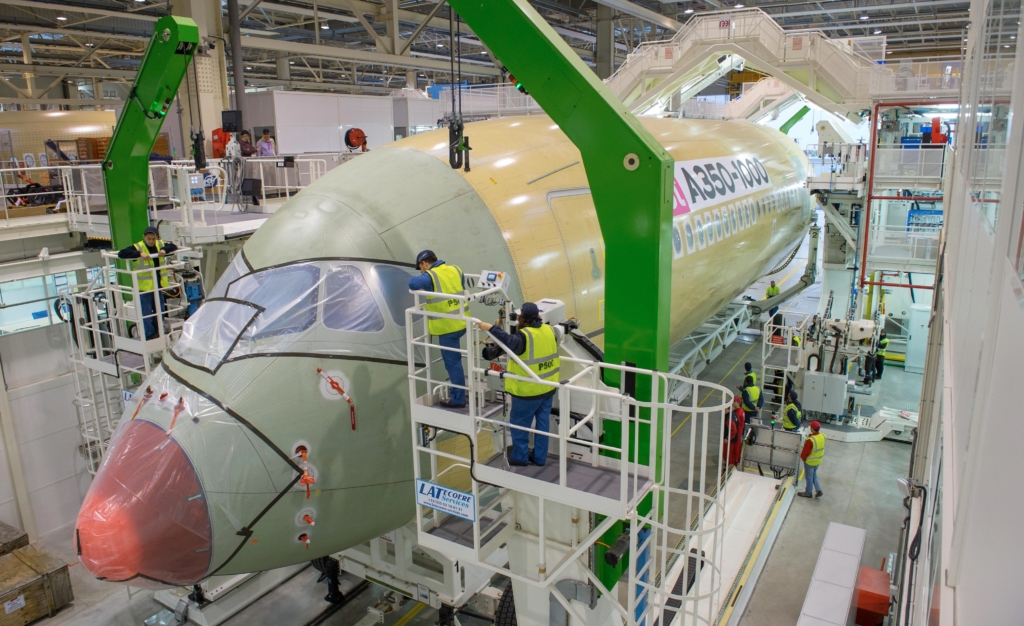
When a hairline crack appears in the wing of an…
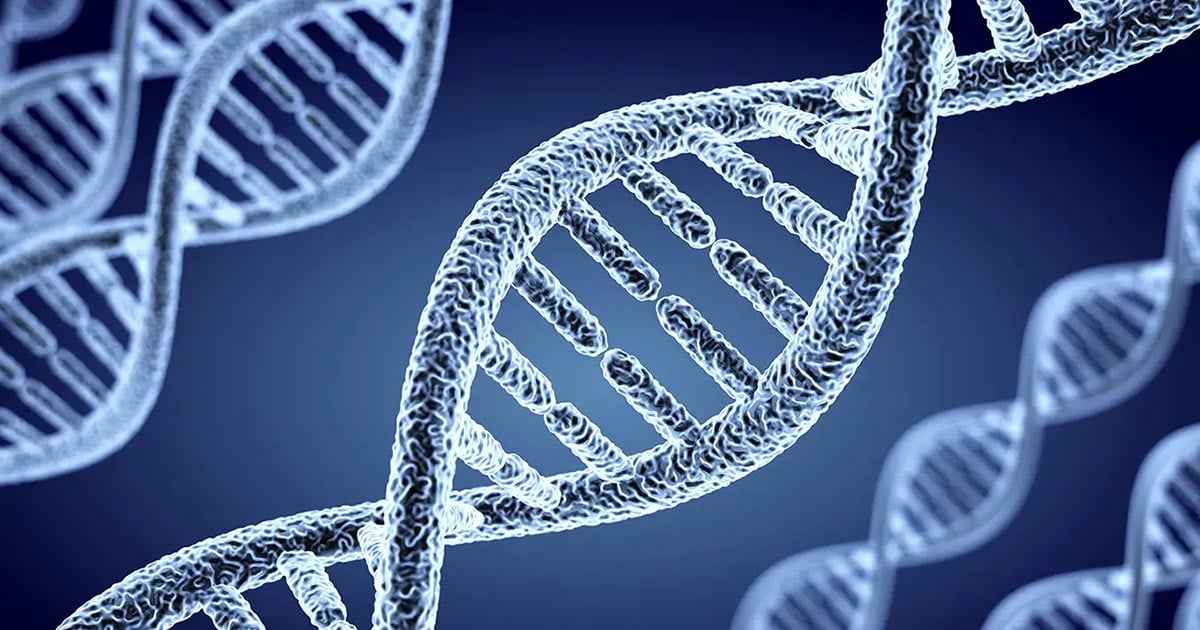
In a pre-emptive move towards ensuring the responsible application of emerging biological sciences, scientists have urged caution in the development of a new—albeit hypothetical—form of life arising from research in mirror…
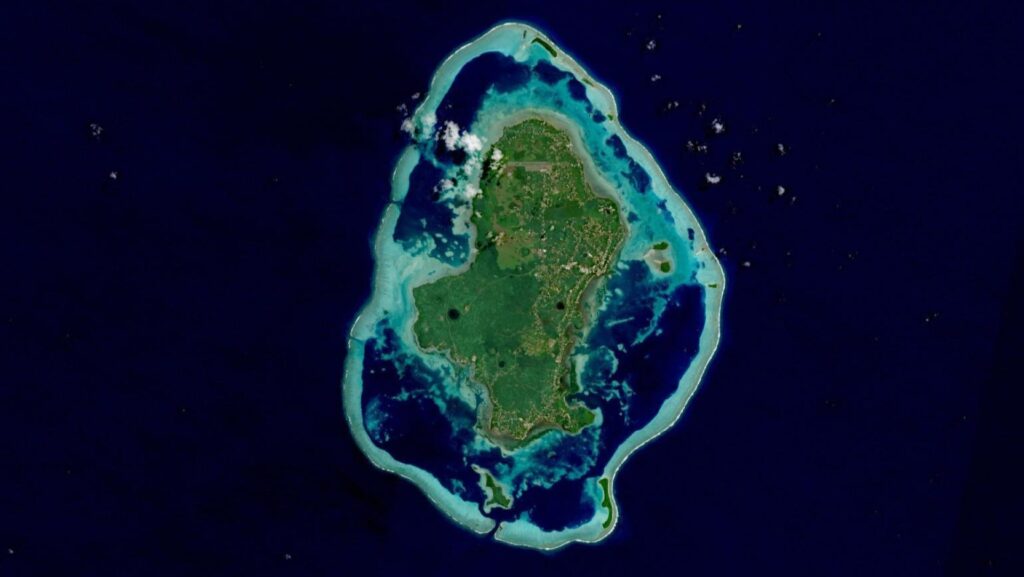
Microsoft is making NASA’s satellite data accessible via Azure. The Harmonized Landsat and Sentinel-2 dataset is now available via Microsoft’s Planetary Computer platform. Researchers can use it to analyze billions of…
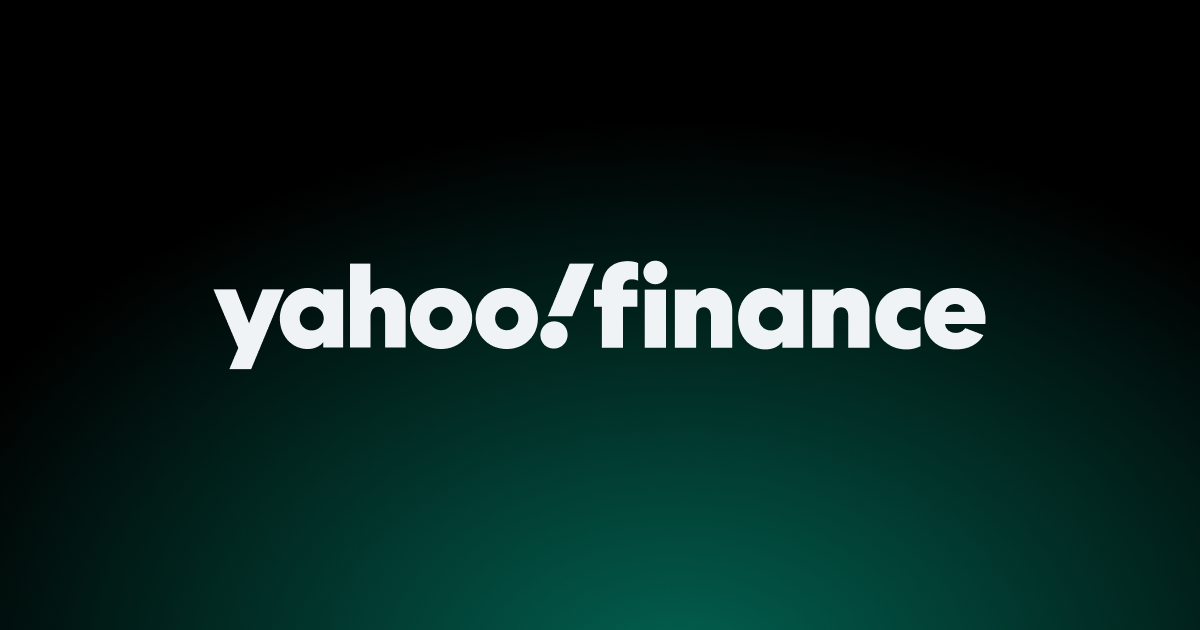
This article first appeared on GuruFocus.
ELD Asset Management assesses Apple’s negotiations to acquire Prompt AI as a focused talent-and-technology transaction that concentrates on on-device intelligence and developer utility. In Q3 2025…

The one thing every FM fan looks forward to, other than the release date of the game itself, is the yearly Early Access. With the FM26 beta approaching, this year is no exception.
Giving players the chance to try out the game for the very first…

Striking that balance – between school, work and her sport – hasn’t been easy, especially as she has prepared for Jakarta.
“One time I joked, ‘I might have to go to class with my grips on’,”…

I should confess at the outset that Richard Linklater’s Blue Moon — an often funny valentine to Broadway’s wittiest lyricist before Stephen Sondheim — might as well have been written specifically for me. As a musical comedy fan who…